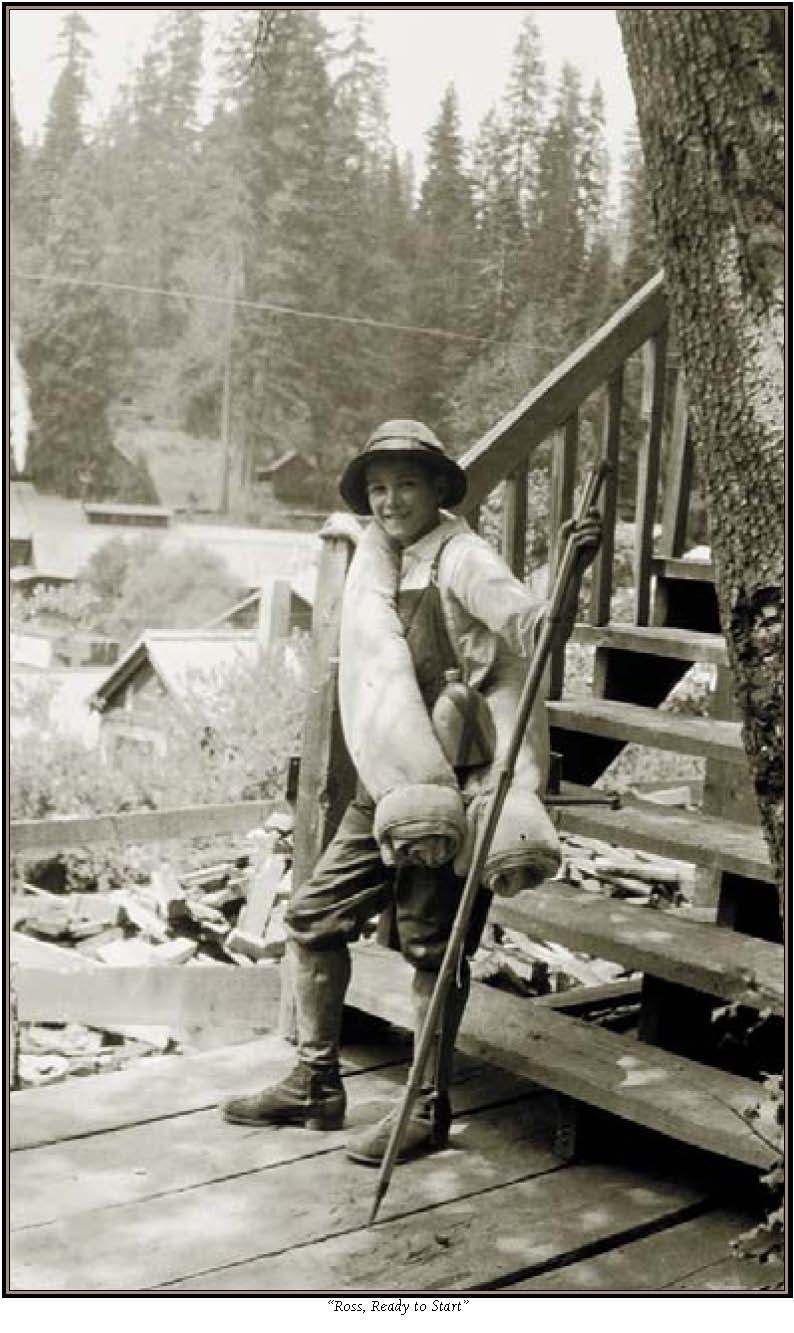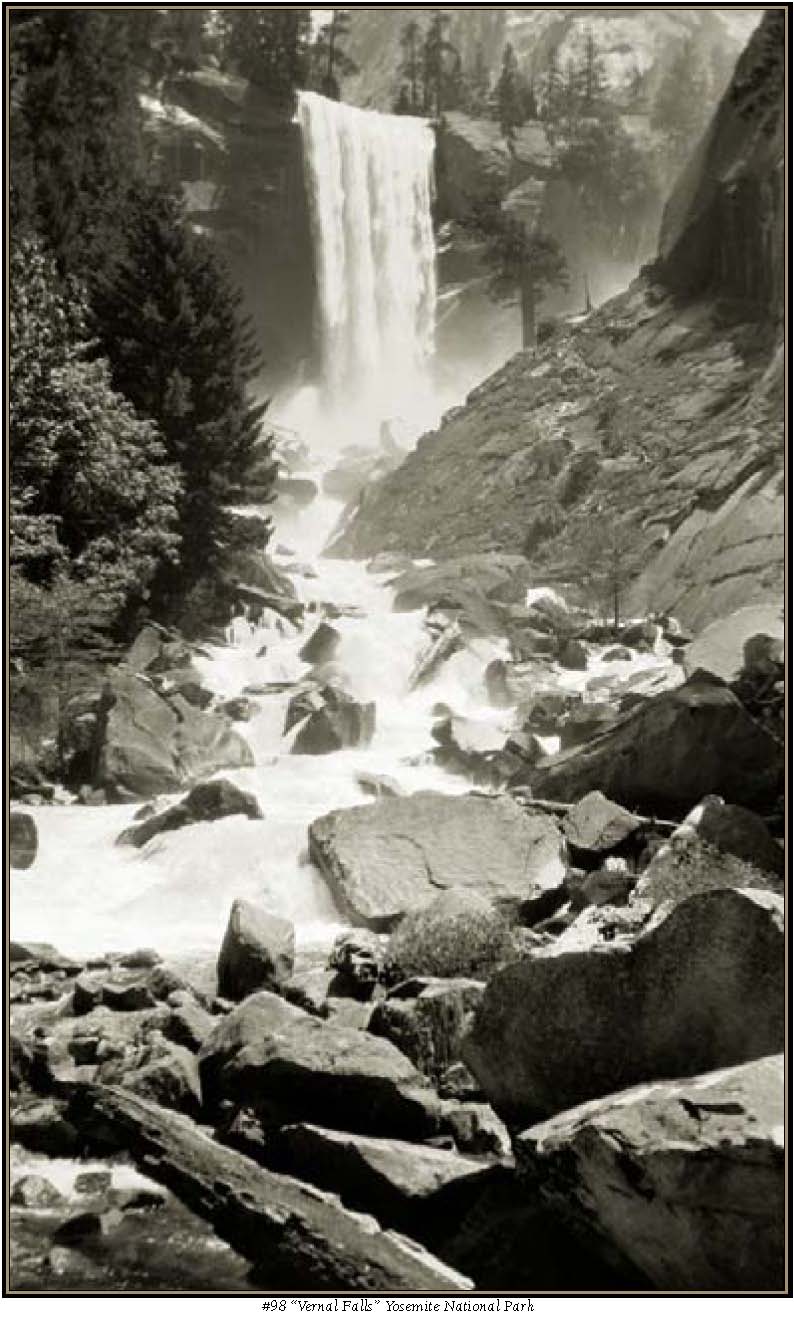What the PinesWhispered
“What the Pines Whispered” is the last chapter of the last mystery novel written by Anna Katherine Green. Her first novel, “The Leavenworth Case,” appears in a 1921 photograph of the doctors and staff of Sugar Pine Hospital, in Madera County California. If the sugar pines of Madera County could whisper, perhaps they could solve another mystery: who took these photos, and why were they found in a dresser drawer in a Salvation Army store.
In 1974, I was given an old cardboard 3x5 file box, filled with negatives. The box held hundreds of negatives, mostly in obsolete 116 format, divided by old school file cards, most with a description of the content of the negative. There was also a Kodak negative binder for 2.5x4.25: negatives (116 film). Many negatives were taken with a No.1A Kodak Folding Pocket Camera . The “A” denotes Autographic, a features which permits the photographer to make notations between the frames. Some were in separate envelopes. One set was photographs of the 91st Division homecoming parade on Market Street, San Francisco, 1919. Among the more interesting negatives were scenes of the logging town of Sugar Pine.
Sugar Pine was a company town of the Madera Sugar Pine Lumber Company. Madera Sugar Pine was one of the largest lumber companies in California. The Sugar Pine Post Office opened in 1907, but closed in 1934. Sugar Pine is located in the Sierra range, near Yosemite National Park. The area is also known for gold mining. When Mark Twain and Brett Harte were living and writing in the rough and tumble world of California prospectors, this was their back yard.
The
photographer lived among the millworkers and sawyers of Sugar Pine in 1921
and 1922. The Sugar Pine school class photos suggest that the photographer
was a teacher. The photos include non-mill employee of the town, such as
doctors and nurses, who would probably have been the social circle of a
company town teacher. On further examination of the card file, a 3x5 card
was found with the notation “Margaret Walker, teacher, Spr. 1922 Sugar
Pine.” The negative for that card is missing, but other images demonstrate
that Margaret Walker, M.F. Walker and “Amy” are the same person. A
double-exposed negative is identified as “Bob & Amy at Hilton.”
In this picture, Amy wears the same
hat and dress as in the photo identified as “M.F. Walker, May 11, 1921.”
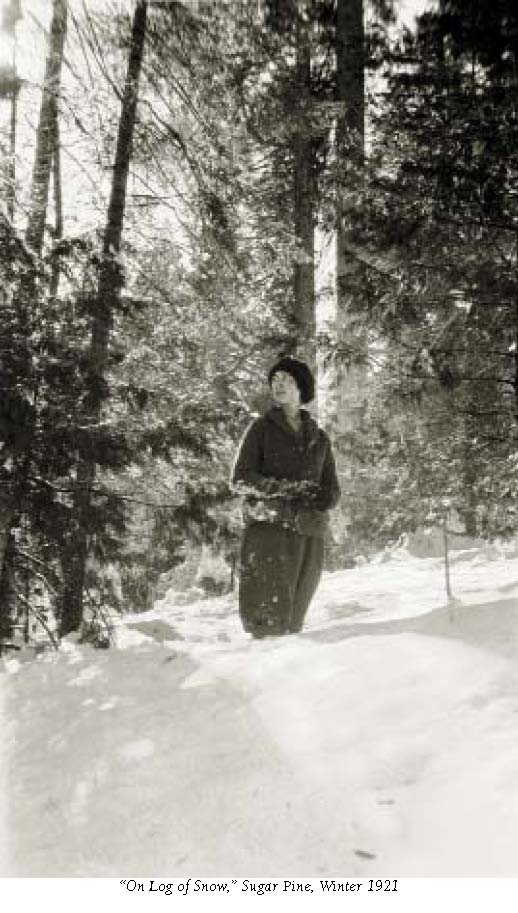
Some scenes are from other parts of Northern California, including San Francisco, Oakland, Berkeley, San Jose, and resort areas along the Russian River,such as Monte Rio. There are names with locations, such as “Bob at Monte Rio,” “Susie at Twin Peaks,” “Amy with friend at summer home.” Many of the images of “Amy,” are identified as M.F. Walker, or M. Walker. There are pictures of Amy and Bob at Monte Rio, and Amy at Sugar Pine, and R.W. Walker at various sites in Berkeley and Oakland. There are several photos of a young boy named Ross, such as “Ross at the turn in the road, Yosemite National Park. Some time after 1922, Amy gave birth to a baby. From that point on, the images were less adventurous. Before “Baby,” R.W. and M.F. Walker traveled Northern California, taking pictures of natural wonders. After “Baby,” their focus was family. Their lives did not revolve around their experiences of the world around them, but on Baby’s world.
Who are they? A genealogy search on the Internet revealed one possible answer. Unfortunately, the person who posted the family tree no longer has a valid e-mail address. The tree, is just a fragment, but it fits the names, dates, and places in the photos. Earnest Robert William Walker was born in Australia 28 Jun 1885. He married Nellie Margaret Fragin in Berkeley California. 1922. Nellie Margaret Fragin Walker was born 13 Aug 1898 in Forestville CA, which is on the Russian River, near Monte Rio. A daughter was born in Berkeley: Amy Ruth Walker. A son is listed as Gordon Ross Walker. All the loose ends may not tie up, but this genealogy fits if certain assumptions are made. Earnest Robert William Walker was 13 years older than Margaret Fragin. The “Ross” in the pictures appears to be about 10 years old in 1922. If Gordon Ross Walker was R.W.’s son by a previous marriage, he could be the “Ross” in the pictures. Ross may also have been Amy’s younger brother, and the “Gordon Ross Walker” found in the genealogy may be the second child (appearing in later pictures), with his middle name in honor of his Uncle Ross.
“Amy” and Margaret Walker appear to be the same person in the pictures, but she is not referred to as Nellie. If the genealogy is that of the people pictured, none of them chose to use their given names. That doesn’t surprise me. My mother and her two sisters each had four names. My mother was Laura Ethel Viola Jane. She was called Jane as a your girl, Viola as an adult. Her sister them. These are the “Kodak moments.” These photos were taken within the first few decades of George Eastman invention of flexible film, putting photography into easy reach of the common man. But cameras and film were still valuable commodities. The camera captured the special occasions, the unique experiences, and the grand views. The daily lives of these people can only be imagined, because the instances captured on film are the rare, cherished moments. Life was more difficult, without our modern conveniences. The trip from Monte Rio to Sugar Pine, or Sugar Pine to Berkeley could have taken all day on 1921 roads, with automobiles of the period. The photos suggest an idyllic time and place, but the “Kodak” moments are the exceptional experiences. This collection contains the high points of one set of lives; a set of lives that is gone and would be forgotten, but for the serendipitous discovery of a box of old negatives in a used dresser at the Salvation Army store.
—Jeffrey C. Marienthal 12 April 2004 (e-mail Jeff if you are related).
The following pictures are in the order found in the negative file, which is not always chronological.
Myrtle Mary Ellen Ann was always Myrtle. But the youngest sister, Martha Rozaella Elizabeth May was May as a child, but Carole as an adult. My great uncle Jack was named Hamlin Benjamin, after family names of his mother. his father said “you can call him anything you want, but I’m going to call him Jack.”And Jack he was, for the rest of his life.
So it is possible that Nellie Margaret Fragin Walker preferred to be called Amy, and named her daughter Amy as well. Earnest Robert William Walker was just “Bob,” and Gordon Ross Walker was just “Ross.”
Any
collection of photographs can only
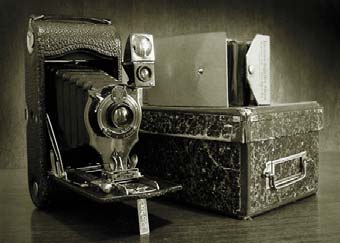
The
negative file box, Eastman Album and a No. 1A Folding Pocket Kodak, suggest
the lives of the people portrayed in the
type used for many of the negatives in this collection.
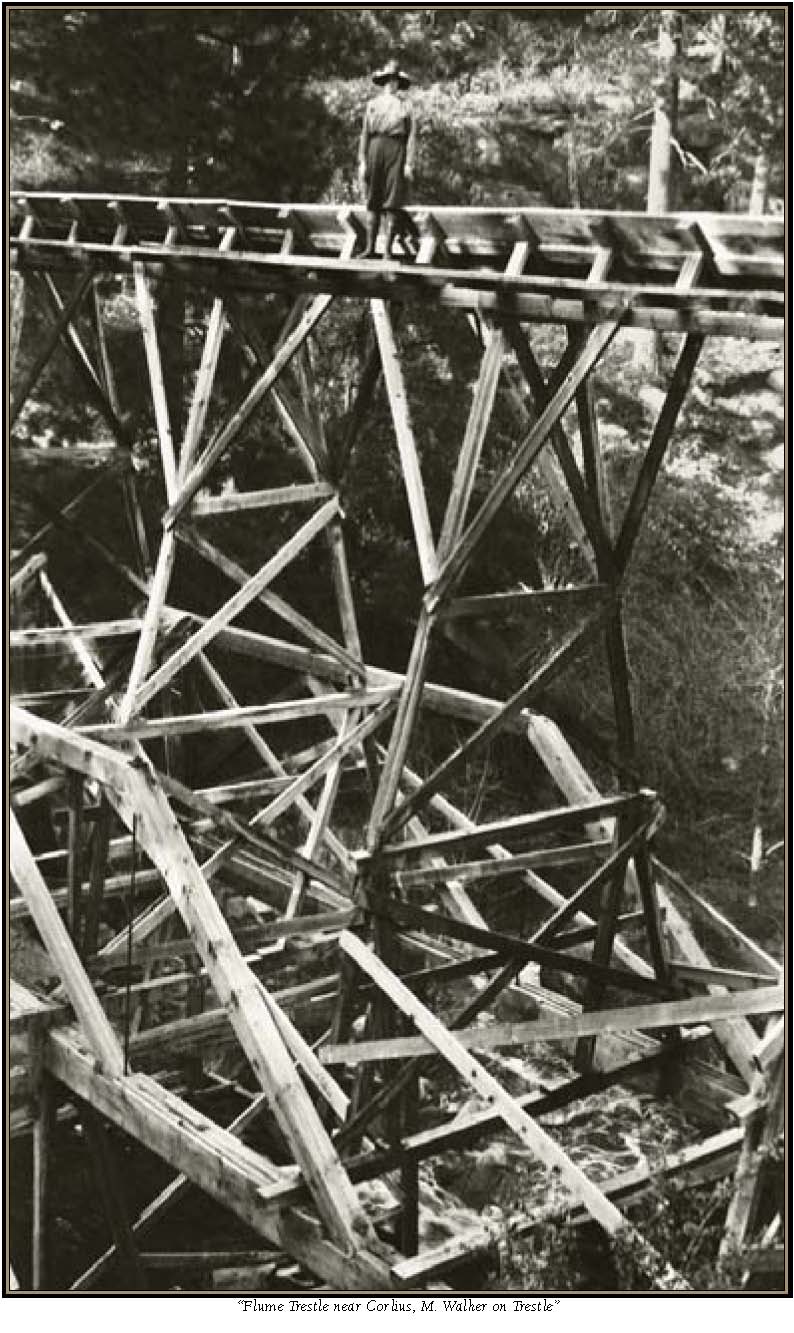

“Sawyers
in Woods, Trip in 1921 with Miss Westagore”“Woods
Trip — Spring 1922” “My
Babies, Spring 1922 1sr Gr. Sugar Pine School”
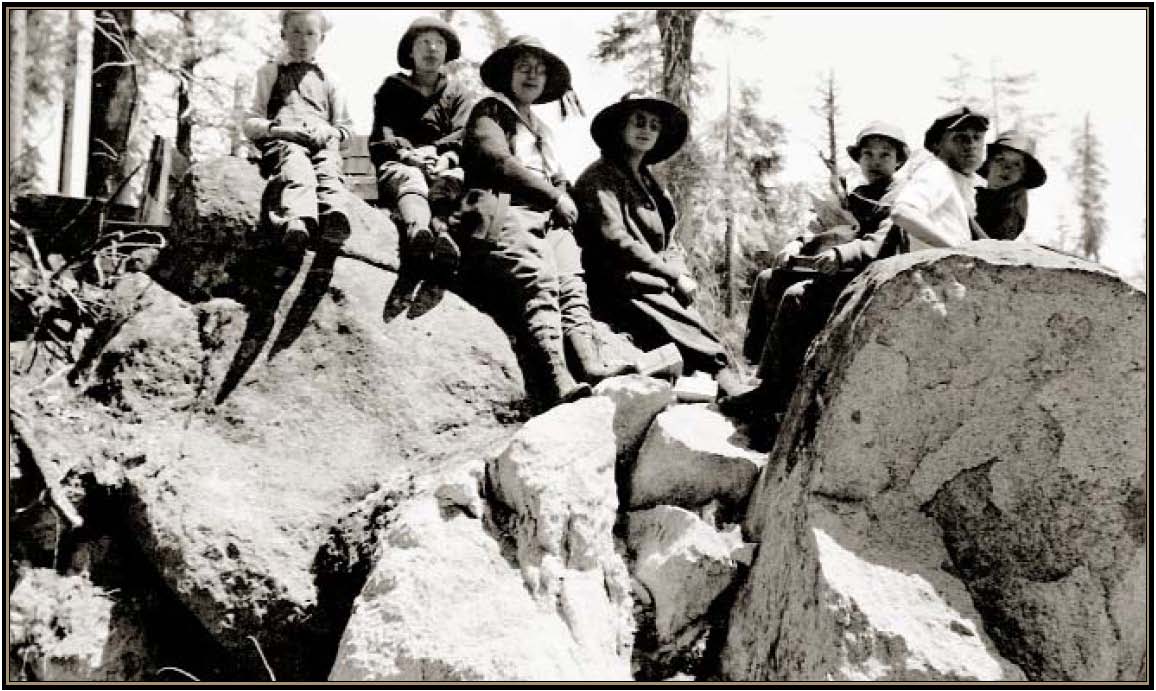
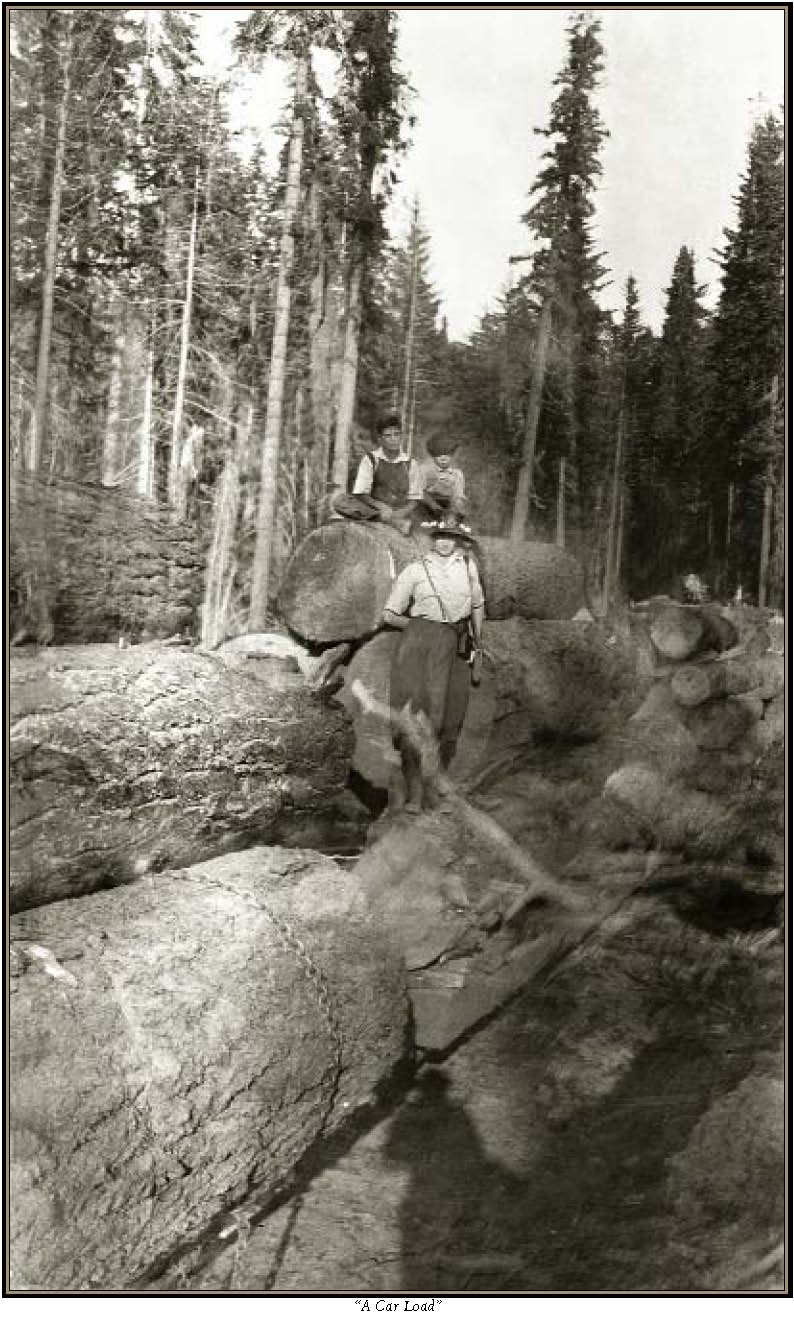
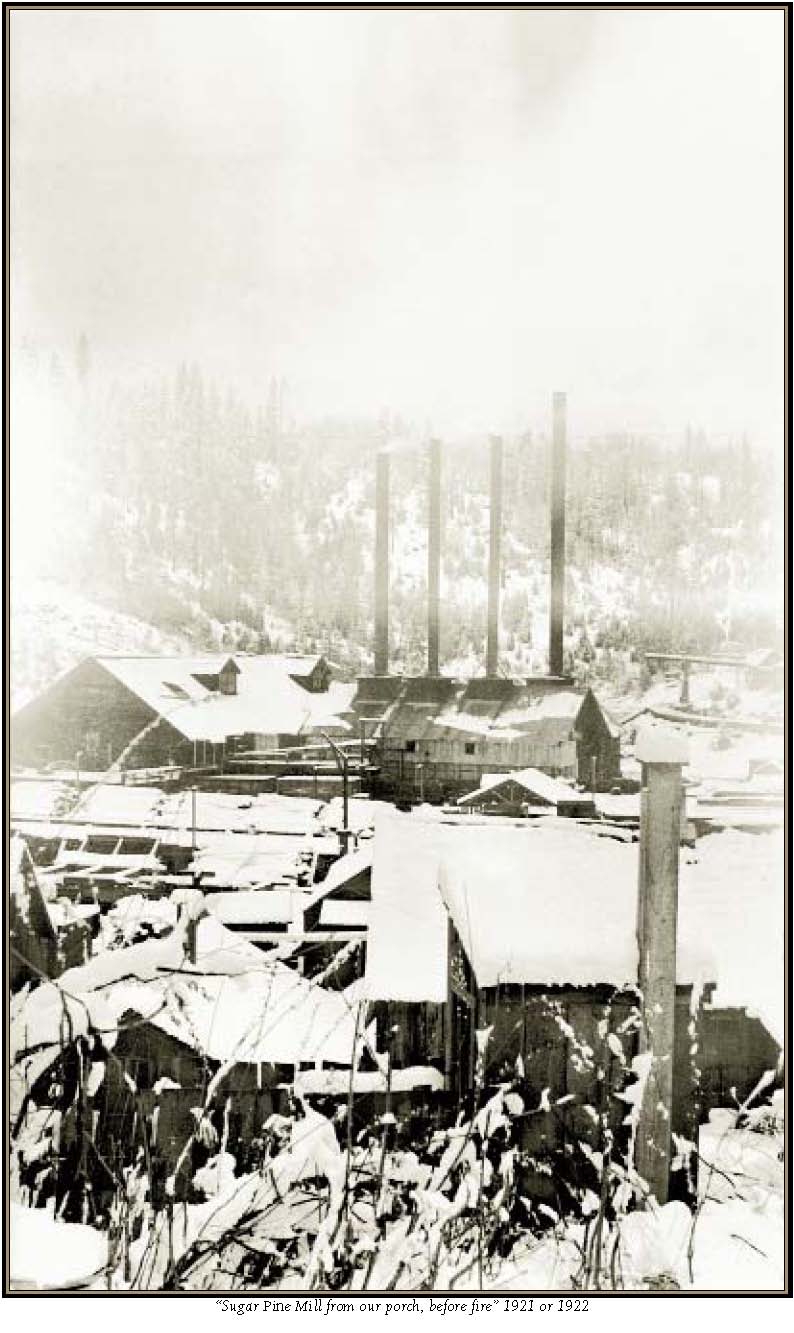
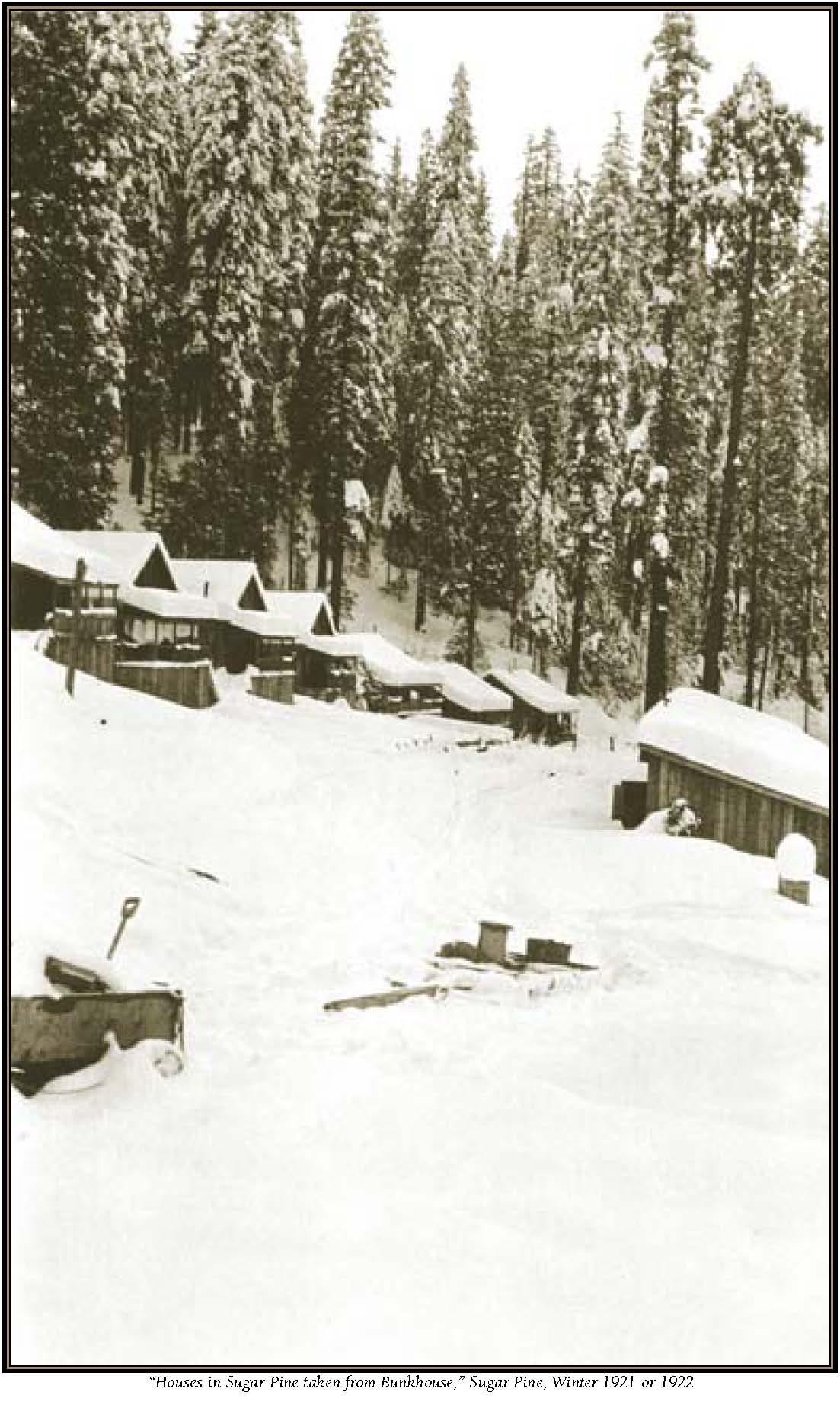
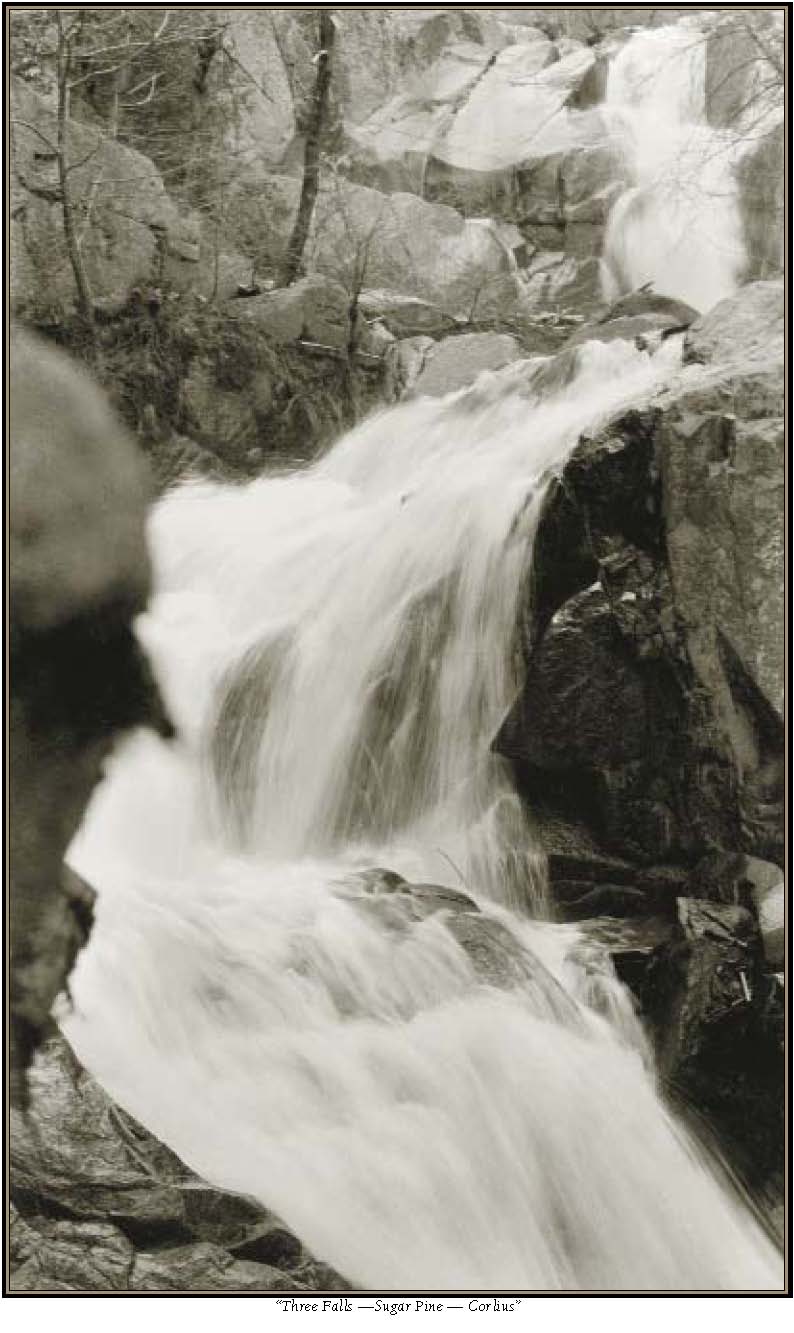
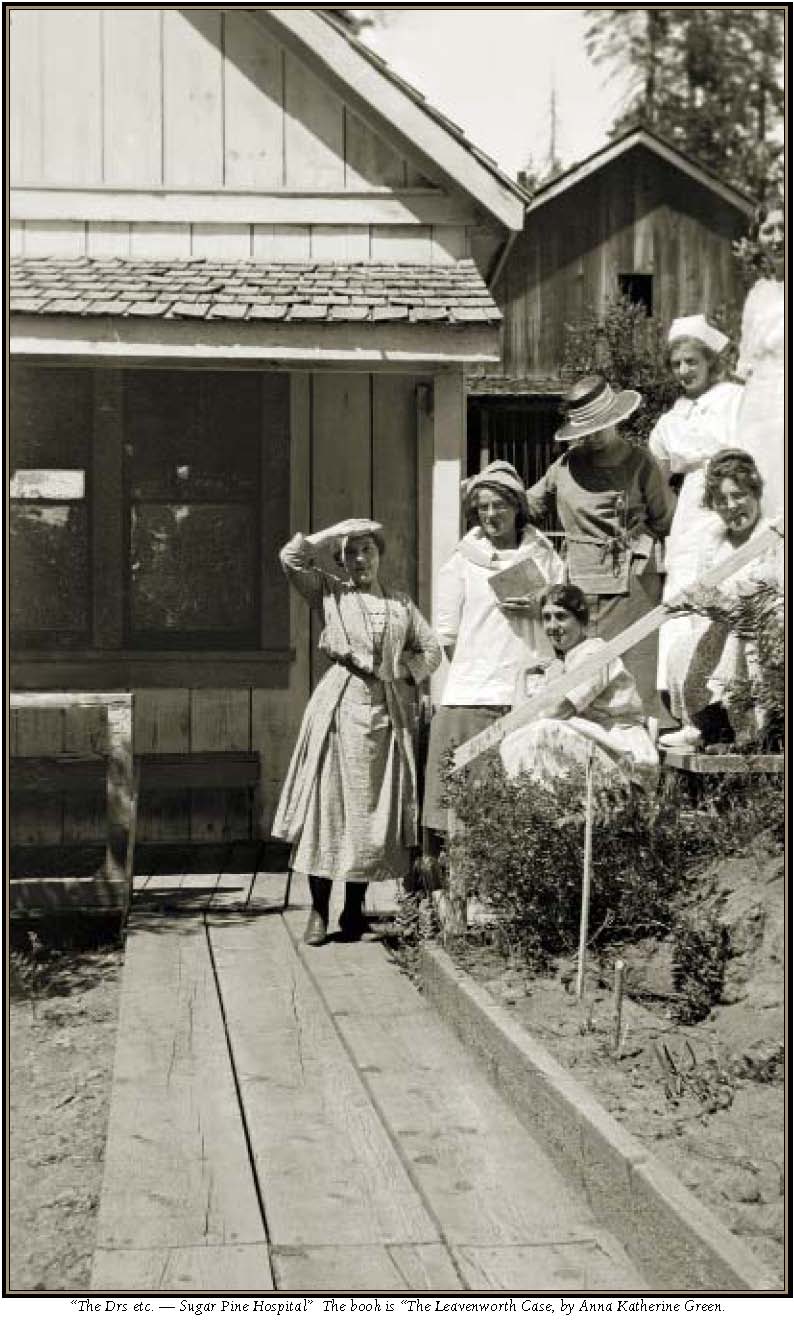
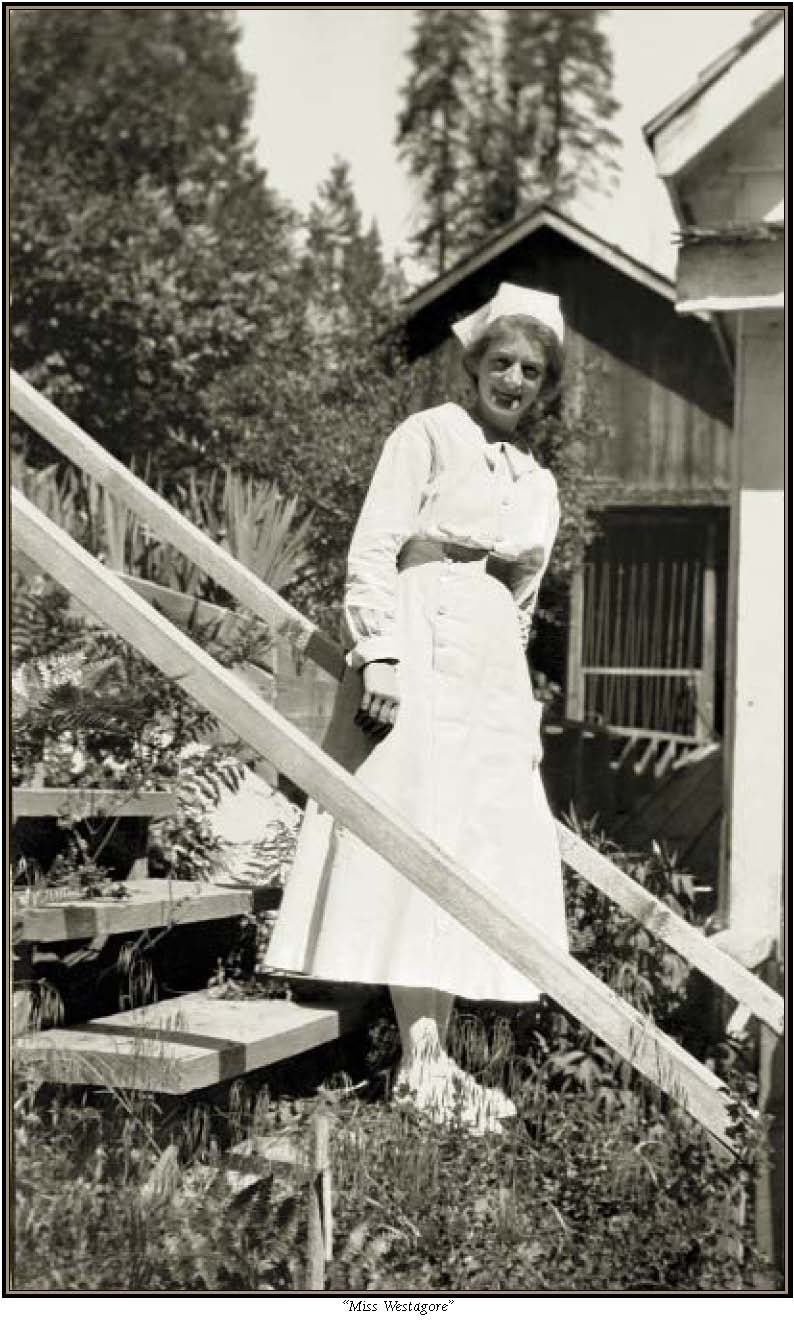
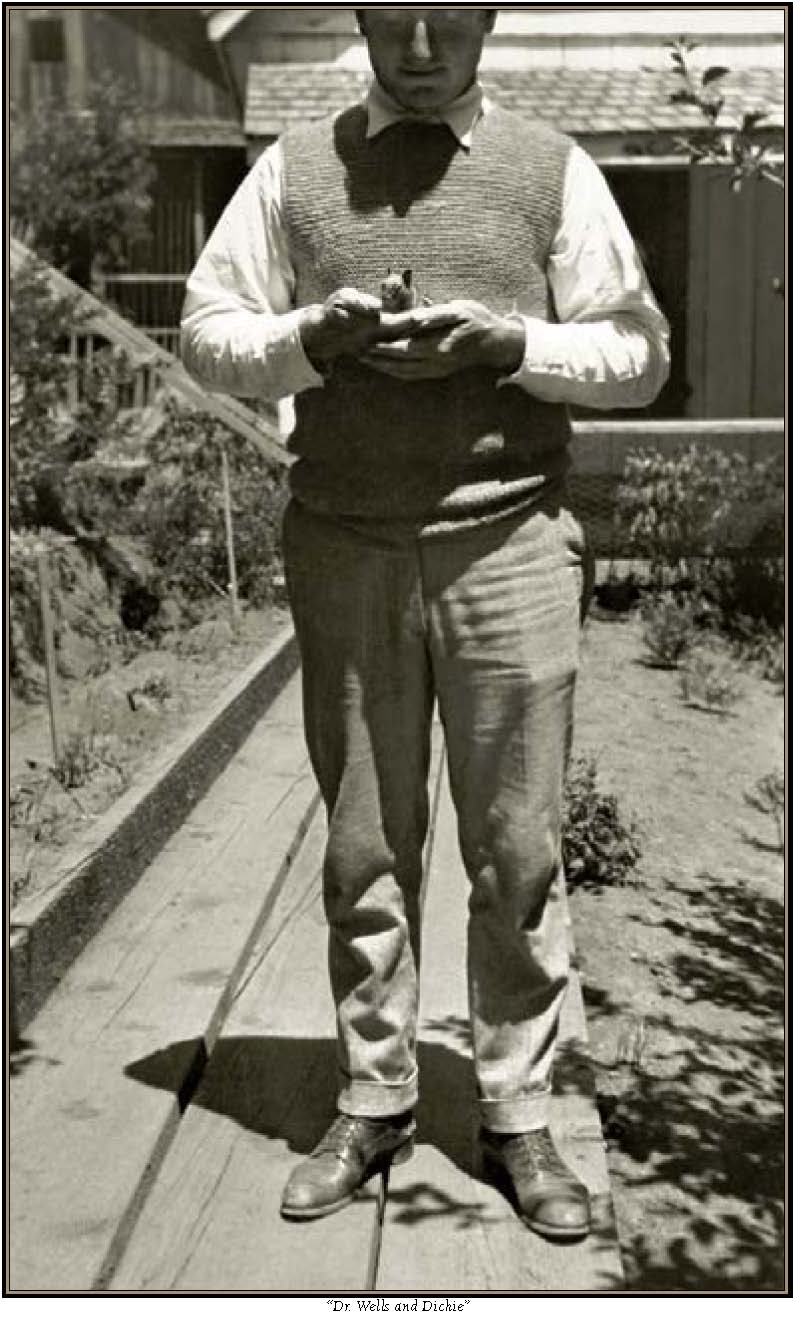
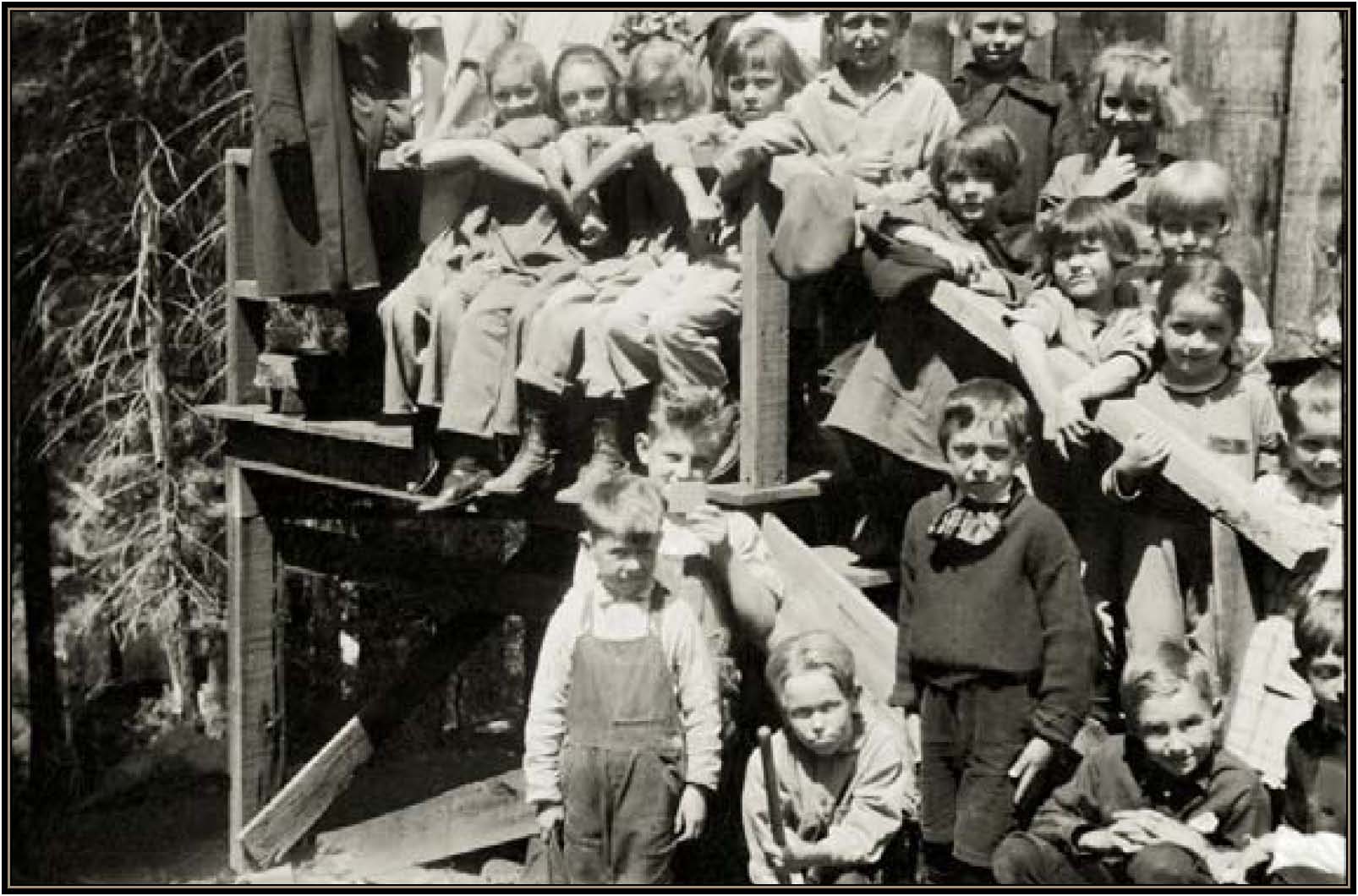
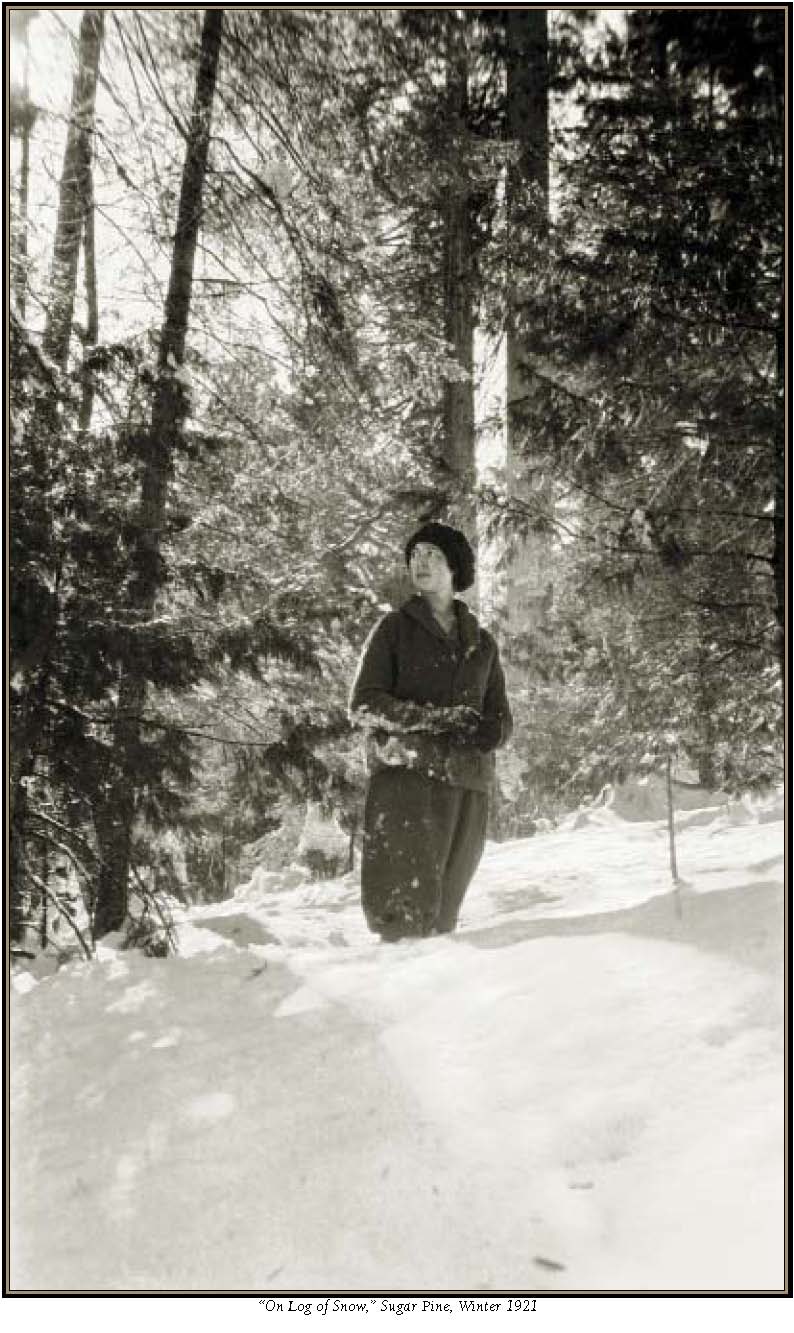
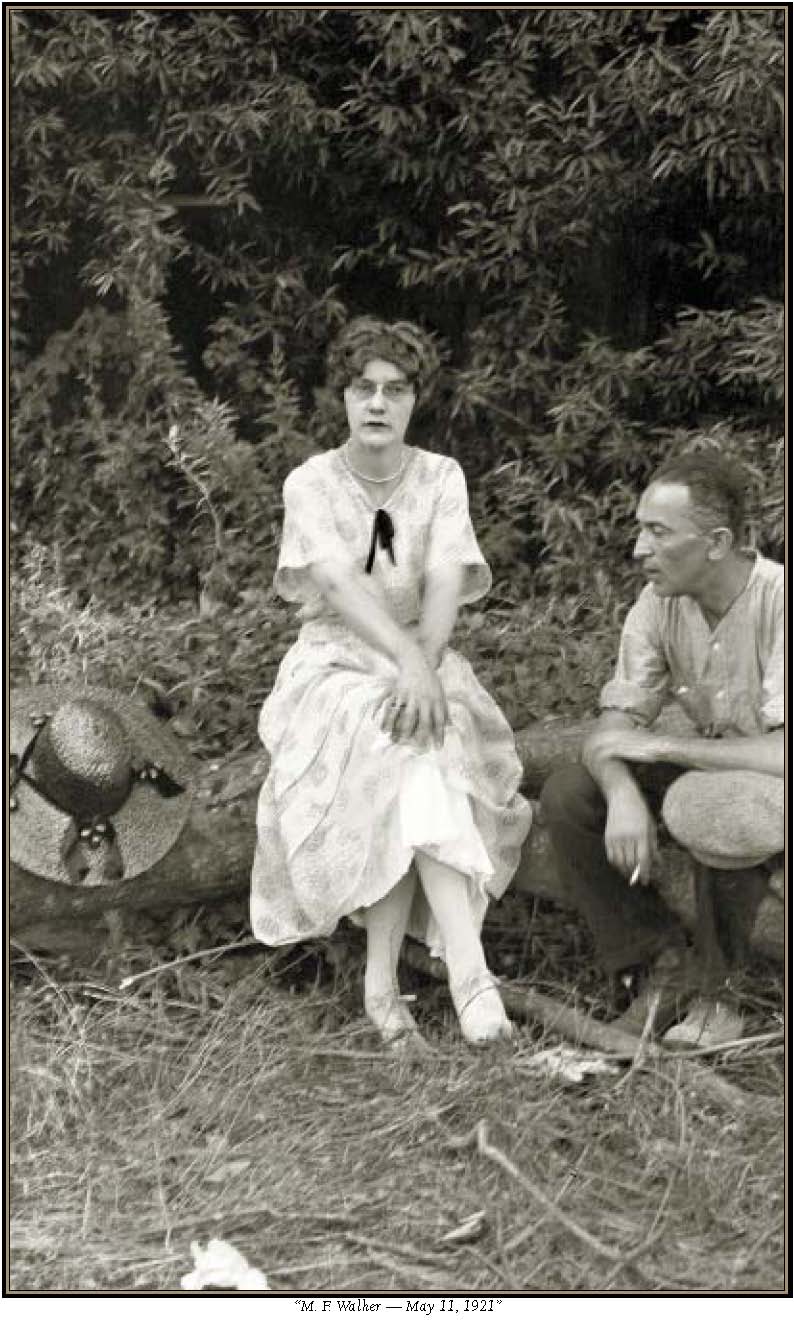
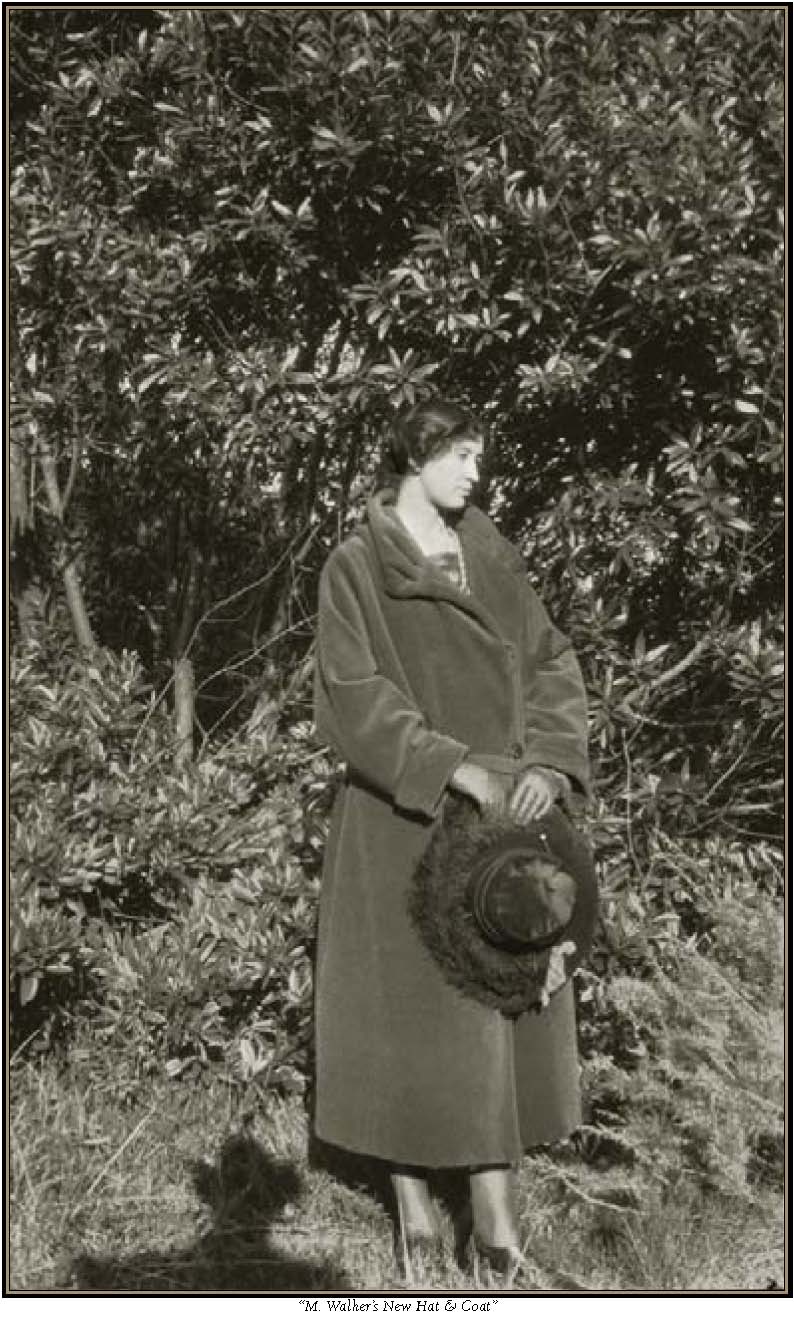
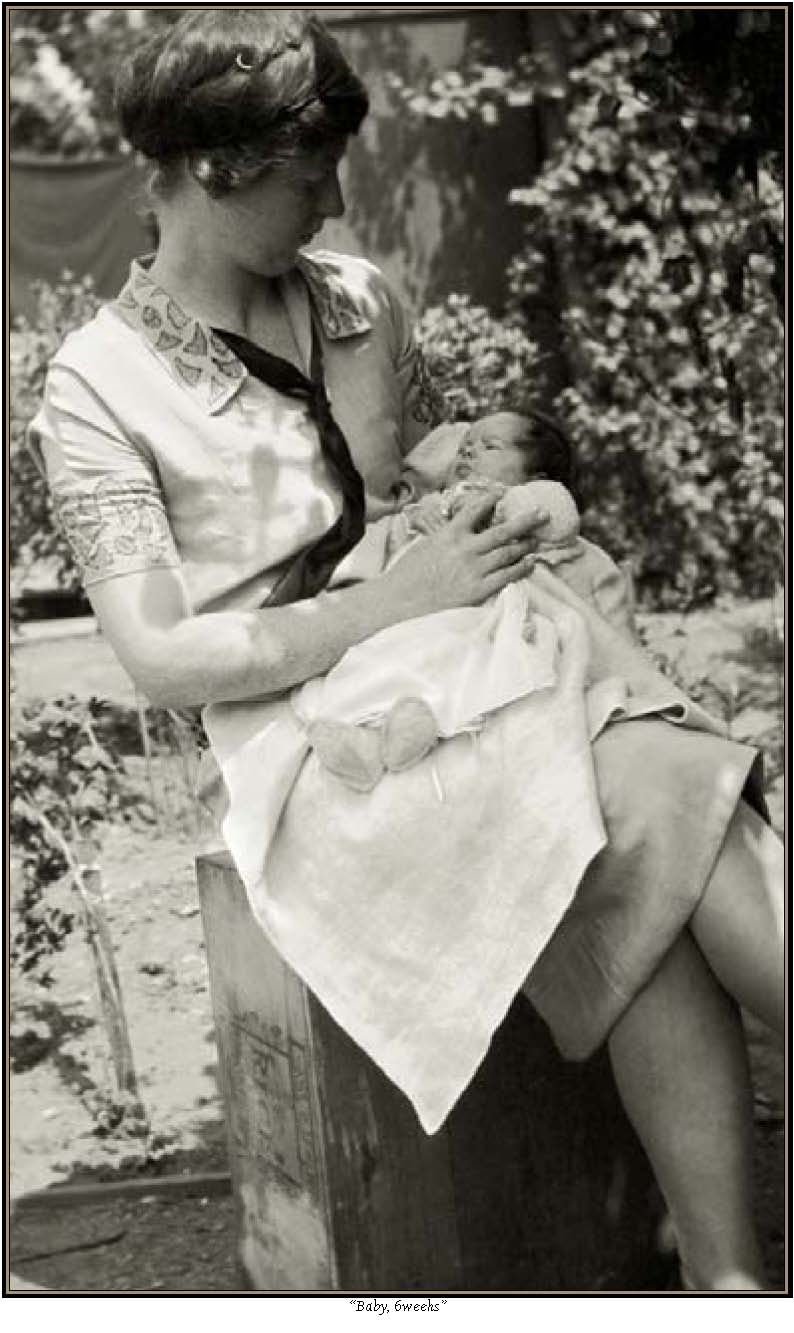


#10:
“Bob & Amy at Hilton”This
double exposure is shown as an example of the “Autographic” feature
of the 1A Kodak Folding Pocket Camera.Hilton
is on the Russian River, near Monte Rio and Forestville, the birthplace
of Nellie Margaret Fragin. Amy wears thesame
dress and hat as in the picture identified as “M. F. Walker, May 11,
1921.”


